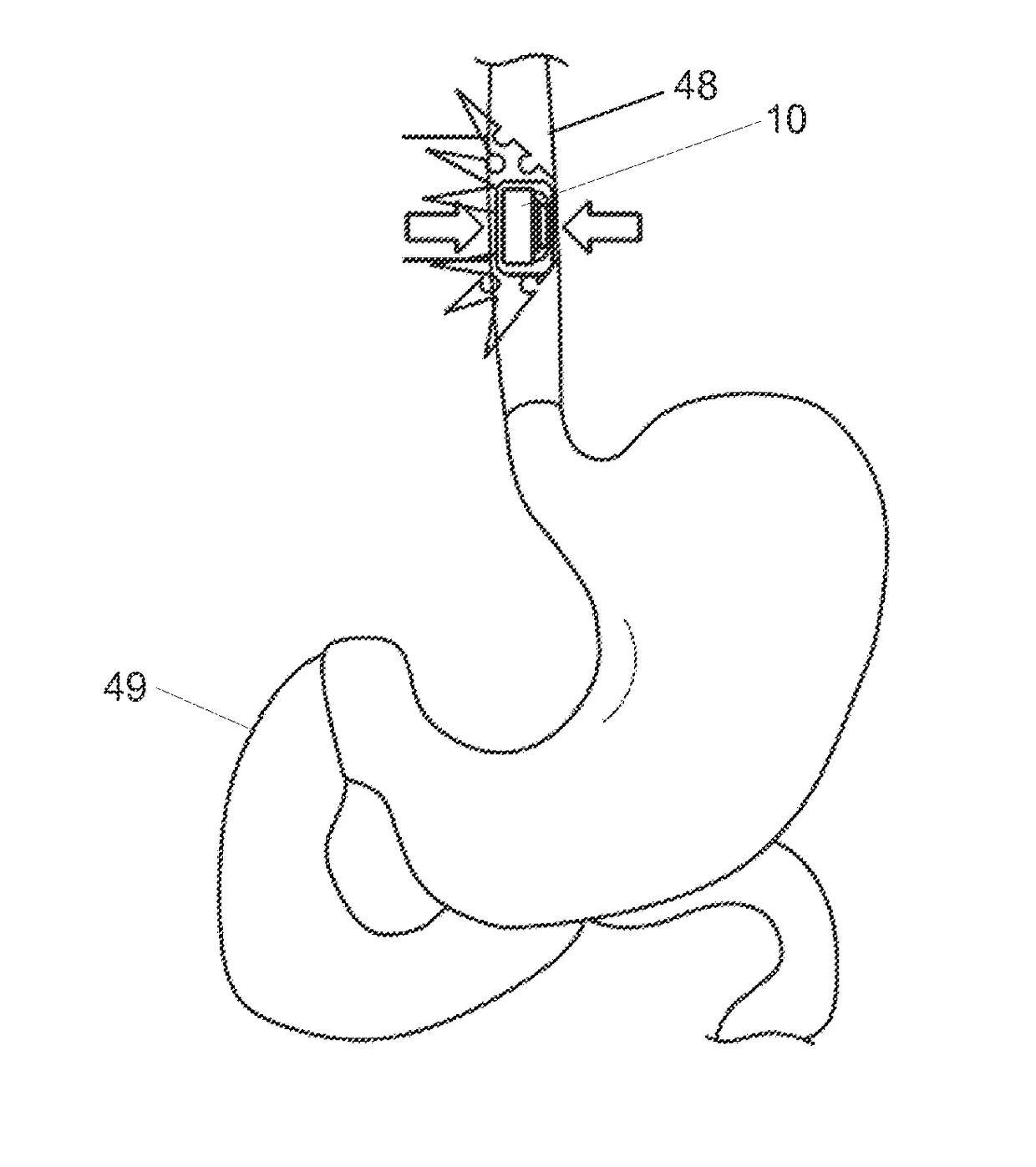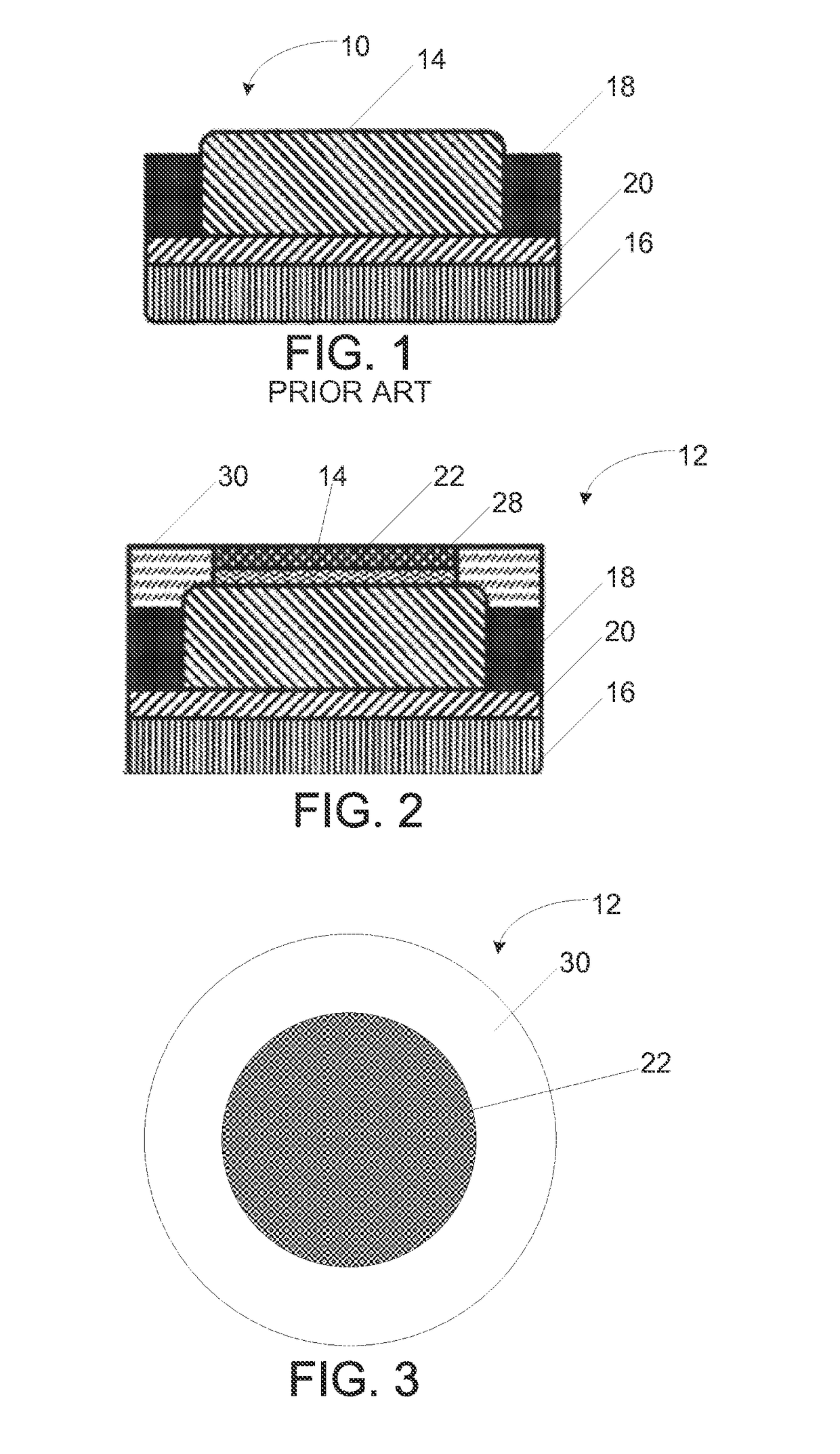Safely ingestible batteries
a battery and safe technology, applied in the field of safe ingestible batteries, can solve the problems of minimal technological development, button battery ingestion is more severe than ingestion of comparably sized objects, and the increase in battery power yields a corresponding increase in the severity of injuries and deaths resulting from button battery ingestion, so as to inhibit the short circuit of the battery and be safe to inges
- Summary
- Abstract
- Description
- Claims
- Application Information
AI Technical Summary
Benefits of technology
Problems solved by technology
Method used
Image
Examples
Embodiment Construction
[0045]Referring first to FIG. 1, a conventional button battery 10 is shown in cross section taken through the central axis of the battery. The conventional button battery 10 includes an anode 14 that is generally cylindrical in shape and a cathode 16 that is also generally cylindrical in shape. The anode 14 and the cathode 16 are separated by a separator 20. The separator 20 creates a barrier between the anode 14 and the cathode 16 that prevents them from touching, while still permitting electrical charge to flow freely between them via an electrolyte. A gasket 18 also separates a part of the anode 14 and a part of the cathode 16. The gasket 18 can be an electrically insulating ring, usually polymeric, that forms a seal on a part of the anode 14 and a part of the cathode 16. In the form illustrated, the gasket 18 forms a ring around the anode 14.
[0046]Although not specifically illustrated in the schematics of the battery in FIGS. 1 through 3, which are somewhat simplified, it will b...
PUM
| Property | Measurement | Unit |
|---|---|---|
| roughness | aaaaa | aaaaa |
| compressive stress | aaaaa | aaaaa |
| compressive stress | aaaaa | aaaaa |
Abstract
Description
Claims
Application Information
 Login to View More
Login to View More - R&D
- Intellectual Property
- Life Sciences
- Materials
- Tech Scout
- Unparalleled Data Quality
- Higher Quality Content
- 60% Fewer Hallucinations
Browse by: Latest US Patents, China's latest patents, Technical Efficacy Thesaurus, Application Domain, Technology Topic, Popular Technical Reports.
© 2025 PatSnap. All rights reserved.Legal|Privacy policy|Modern Slavery Act Transparency Statement|Sitemap|About US| Contact US: help@patsnap.com



